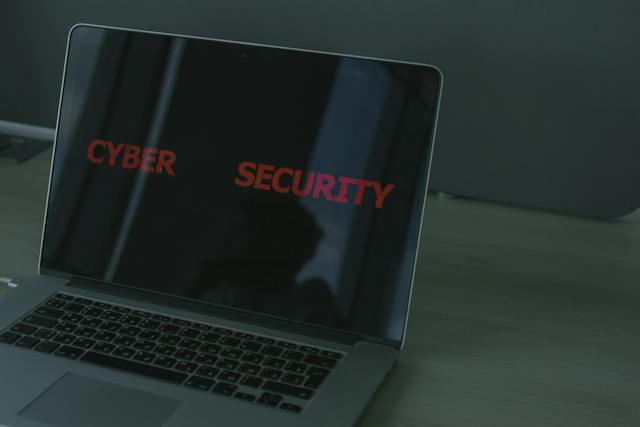In a world in which technology evolves rapidly and cyber threats are a constant concern, the concept of continuous authentication has emerged as a pivotal strategy for businesses. By integrating the Zero Trust model and adopting continuous authentication protocols, organizations can substantially bolster their security posture against evolving cyber threats.
Here’s a comprehensive breakdown on how to put these protocols into practice.

Understanding the Zero Trust Model
The Zero Trust model represents a paradigm shift in cybersecurity philosophy, challenging the long-held assumption that once within an organization’s internal network, users and systems can be inherently trusted. This innovative approach embraces a fundamental premise: no entity, whether internal or external, should automatically receive trust. It adopts a proactive and dynamic stance, emphasizing continuous verification and validation of every identity, device, and access request that attempts to interact with the network.
In contrast to traditional security strategies that predominantly rely on perimeter-based defenses and assume safety once inside the network, Zero Trust operates on the foundation of skepticism. It acknowledges that threats can emanate from both external sources seeking unauthorized access and internal actors with legitimate access attempting malicious activities. By fostering an environment that doesn’t grant default trust to any user or system, this model strives to minimize the potential impact of cyber threats by scrutinizing every interaction, transaction, or attempt to access resources.
Zero Trust’s core focus revolves around implementing a robust and dynamic security approach that revolves around a continuous cycle of verification and validation. This entails ongoing scrutiny of user identities, device integrity checks, and thorough assessment of access requests.
By emphasizing a constant need for authentication and authorization, this model significantly reduces the risk of unauthorized access or breaches by continuously assessing the legitimacy of users, devices, and access attempts. This framework ensures that trust is not bestowed implicitly but is consistently earned and verified, making it a pivotal element in fortifying an organization’s cybersecurity posture in the ever-evolving threat landscape.
7 Best Practices for Implementing Continuous Authentication and Validation
Continuous authentication involves the ongoing verification of user identity and access, even after the initial login. This method employs multifactor authentication, biometrics, behavioral analytics, and other advanced techniques to continuously monitor user activities and validate their identity, minimizing the risk of unauthorized access or malicious activity.
Validation protocols within the Zero Trust framework revolve around the continuous scrutiny and validation of user activities, devices, and access requests. This involves real-time analysis of user behavior, determining access privileges based on contextual factors, and scrutinizing each access attempt to ensure legitimacy.
1. Enforce Strong Access Controls: Implementing strict access controls is fundamental in the Zero Trust model. This includes principles of least privilege, where users are granted only the access required to fulfill their roles. Layered access controls, such as microsegmentation, add an extra security layer by dividing the network into smaller, more controllable segments.
2. Leverage Behavioral Analytics: Behavioral analytics plays a crucial role in continuous authentication. By analyzing and understanding normal behavioral patterns, any deviation or anomaly from the established patterns triggers an alert, prompting further validation or action to prevent potential threats or breaches.
3. The Role of Machine Learning and AI: Leveraging machine learning and artificial intelligence enhances the Zero Trust model’s capabilities. These technologies can efficiently analyze vast amounts of data, predict potential threats, and automate responses based on predefined security policies.
4. Implement Continuous Monitoring: Continuous monitoring is a cornerstone of the Zero Trust model. It involves real-time surveillance of network activities, devices, and users, allowing for immediate threat detection, containment, and response. Monitoring ensures that the security posture remains robust and adapts to changing threat landscapes.
5. Ensure User Training and Awareness: Education and awareness are crucial components of any security strategy. Training employees to recognize security threats, understand the importance of continuous authentication, and follow best practices fortifies the security of the system.
6. Regular Security Audits and Updates: Conducting routine security audits and keeping systems up-to-date with the latest security patches and measures are integral to sustaining a secure environment. Regular assessments help identify vulnerabilities and improve the security stance.
7. Foster a Zero Trust Culture: Creating a culture that aligns with the principles of the Zero Trust model is essential. Organizations must emphasize that trust is never implied and is continually verified, fostering a security-first mindset across all departments.
Implementing the Zero Trust model and integrating continuous authentication and validation protocols provide a robust and proactive approach to cybersecurity. By continuously verifying and validating every access attempt, the Zero Trust model significantly reduces the risk of unauthorized access, ensuring a more secure and resilient network environment.

